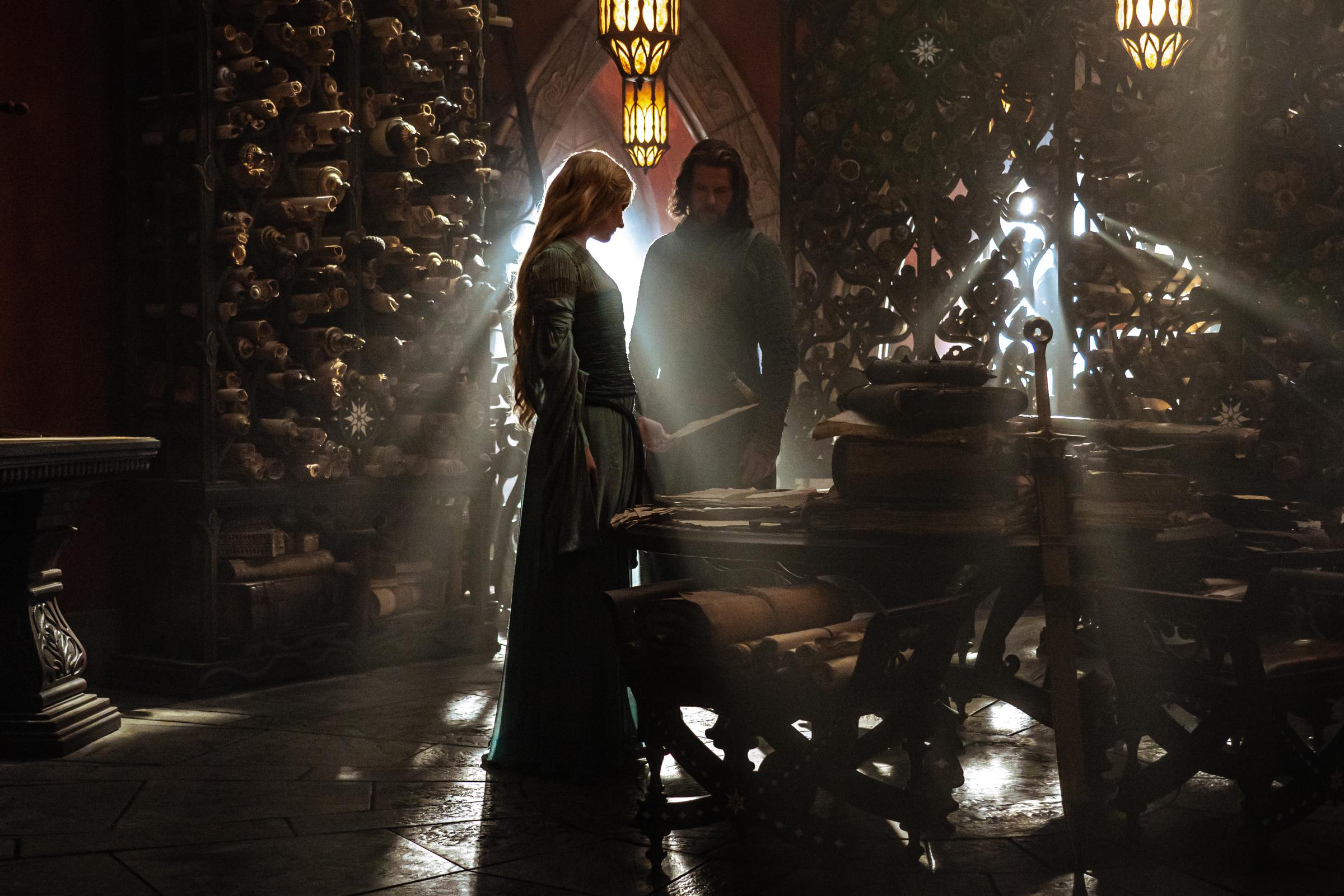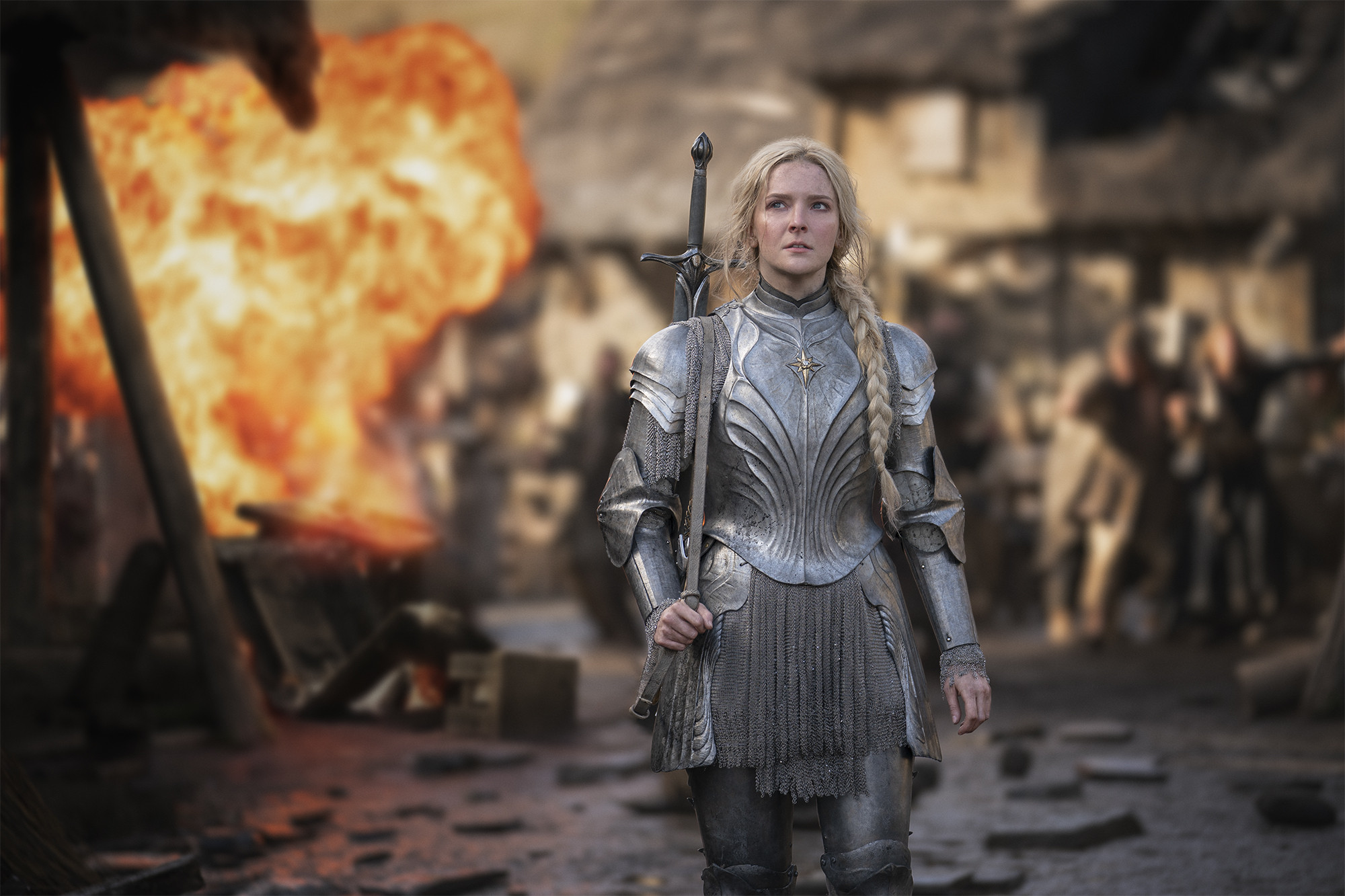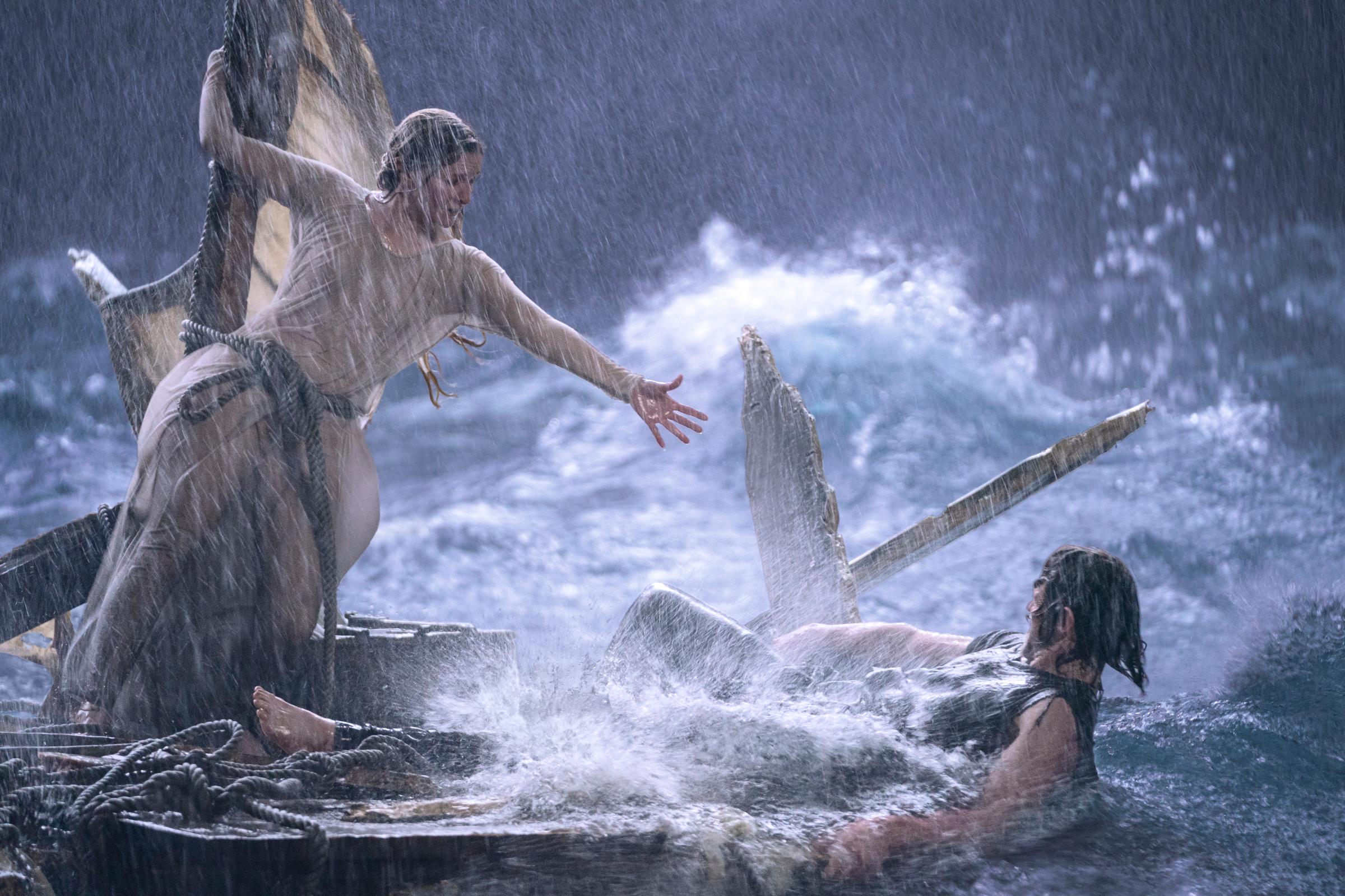The sprawling Lord of the Rings prequel, The Rings of Power, doesn’t have a main character. The show boasts 22 series regulars and the action takes place across six or seven lands—just in the first season alone. But the immortal and powerful elf Galadriel is perhaps the closest we come to a hero in the series. While reporting TIME’s cover story on the new Prime Video series, I spoke to actor Morfydd Clark and showrunners J.D. Payne and Patrick McKay about how they created a new version of one of Tolkien’s most iconic characters.
Read More: 20 Important Characters You Need to Know Before Watching The Lord of the Rings: The Rings of Power
Fans of the Lord of the Rings books and Peter Jackson’s film adaptations will already be familiar with the elf with flaxen hair who helps Frodo in his mission to destroy the titular ring and thus defeat the evil villain Sauron. In Jackson’s trilogy, Cate Blanchett plays an older version of Galadriel who serves as more as a stateswoman.

But The Rings of Power is set in the Second Age of Middle-earth, about 3,000 years before the events of The Fellowship of the Ring. This means Galadriel will undergo millennia of growth and experience before she becomes the version of the character we’re familiar with from that seminal text.
In order to figure out how a much younger Galadriel might behave, Rings of Power showrunners Payne and McKay dug into Tolkien’s appendices at the end of The Return of the King, which serve as the source material for the show.
Read More: 11 Rings of Power Secrets We Learned From the Cast and Creators
Amazon acquired the rights to The Hobbit, The Lord of the Rings, and the Appendices, but not works The Silmarillion, Tolkien’s collection of Middle-earth myths. That limited what versions of the characters they could show, but they were also hyper-aware of the rest of Tolkien’s works so they didn’t misstep with the fans. “There’s four versions of how Galadriel met a certain person, and we don’t have the rights to any of them, but we have to be aware of them,” says McKay.

Complicating matters, Tolkien frequently changed his mind about the immortal and powerful elf. Galdriel’s origins, including when she arrived in Middle-earth, when she married, and how she spent her time during Sauron’s rise and fall. Though she appeared in the Lord of the Rings, Tolkien also wrote extensively about the powerful elf in the appendices to that work, his notes, and various other texts, often contradicting himself in the process.
Most Tolkien fans are most familiar with the version of Galadriel that appears in Lord of the Rings, and especially in Jackson’s adaptation of that story. At that point in her life, she was a serene stateswoman contemplating retirement. At the end of Fellowship of the Ring, Frodo and his companions visit her. Frodo even offers her the one ring. Galadriel admits she has long awaited the chance to seize the powerful token. But, she says, if she took it, she would become corrupted herself and rule over Middle-earth as a beautiful but tyrannical queen. She turns down Frodo’s offer and, relieved, realized she has passed the ultimate test and can return home to the Undying Lands, where the elves hailed from before they came to Middle-earth.

But in various other works, Tolkien writes about Galadriel as a warrior, which clearly influenced her portray in Rings of Power. Payne, who has a penchant for switching to Elvish mid-conversation, points out that Galadriel’s name roughly translates to “elf maiden with a crown of golden hair.”
“That’s because when she would do sparring exercises and fight with a sword, she would do her hair up in braids on the top of her head,” he says. “So the idea of Galadriel as a warrior is built into Tolkien’s Legendarium. It’s just not something that we think of from the depictions that we’ve seen.”
Read More: The Rings of Power Exclusive: Producer Says Fan Theories About Sauron Are Wrong
Actor Morfydd Clark says the different descriptions of Galadriel gave her space to form a character they thought would work best for the show. “Tolkien changed his mind about her a lot,” she says. “That was nice because there were quite a few structures of her I could pick from.”
The showrunners wanted to focus on that moment where Galdriel rejects the ring and figure out how she grew into that character. “Having that level of self-knowledge is extraordinary and speaks to what journey did she go on that she knows herself that well and can make the right choice? What darkness has she faced herself?” says McKay. “And that speaks to an entire emotional interior world that we felt was ripe for exploration.”

And they wanted to tell that emotional journey in a way that was true to Tolkien’s voice. “We never want to be meta or be constantly undercutting things. We hate that in stories,” adds McKay. “We’re not trying to be hip. We’re trying to find fresh terrain in this story that’s bursting with ideas.”
“It always comes back to Tolkien,” Payne says. “We just put our own authorial intent on top of it.”
Read More: 5 Big Questions The Lord of the Rings: The Rings of Power Needs to Answer
Clark points out that there have been many versions of Galadriel, even beyond Blanchett’s iconic iteration in Jackson’s movies. Galadriel has been the subject of plays and radio dramas and films. She has been interpreted and reinterpreted and will continue to bet the subject of fascination: “I’m not the first, and I’m sure I won’t be the last Galadriel.”
More Must-Reads from TIME
- Caitlin Clark Is TIME's 2024 Athlete of the Year
- Where Trump 2.0 Will Differ From 1.0
- Is Intermittent Fasting Good or Bad for You?
- The 100 Must-Read Books of 2024
- Column: If Optimism Feels Ridiculous Now, Try Hope
- The Future of Climate Action Is Trade Policy
- FX’s Say Nothing Is the Must-Watch Political Thriller of 2024
- Merle Bombardieri Is Helping People Make the Baby Decision
Write to Eliana Dockterman at eliana.dockterman@time.com